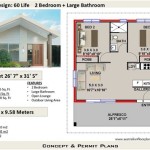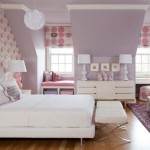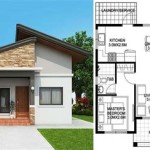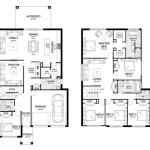Master Bedroom Design Ideas for 2024: Trends and Inspirations
The master bedroom serves as a sanctuary, a personal retreat within the home. As such, its design deserves careful consideration, reflecting individual style preferences while promoting relaxation and rest. Design trends for 2024 emphasize comfort, functionality, and personalization, moving away from stark minimalism towards warmer, more inviting spaces. This article explores key design ideas trending in master bedrooms, providing insights into creating a serene and stylish haven.
Embracing Natural Elements and Biophilic Design
A prominent trend in master bedroom design is the incorporation of natural elements. This approach, often referred to as biophilic design, aims to connect individuals with nature, fostering a sense of well-being and reducing stress. This connection is achieved through various design choices that mirror or bring the natural world indoors.
One common strategy is the use of natural materials. Wood, in its various forms, is a popular choice. Hardwood flooring provides a warm and grounding foundation, while wooden furniture, such as bed frames and nightstands, adds texture and visual interest. Other natural materials, such as stone accents on walls or fireplaces, can further enhance the connection with the outdoors. Rattan and wicker, often used in chairs, baskets, and light fixtures, contribute a relaxed and organic feel.
The integration of plants plays a significant role in biophilic design. Indoor plants not only purify the air but also add a touch of vibrancy and life to the room. Consider larger potted plants strategically placed in corners or smaller succulents and trailing plants on shelves or windowsills. The selection of plants should consider the room's lighting conditions and the homeowner's maintenance capabilities. Artificial plants are also an option for those who prefer low-maintenance greenery.
Natural light is another crucial element. Maximize the amount of natural light entering the master bedroom by keeping windows unobstructed. Sheer curtains or blinds allow daylight to filter in while maintaining privacy. Consider skylights if structurally feasible to introduce even more natural light. Color palettes inspired by nature are also favored. Earthy tones like greens, browns, and blues create a calming and serene atmosphere. These colors can be incorporated through wall paint, bedding, and accessories.
Textural variety also plays a role. Incorporating natural textures like linen, cotton, wool, and jute in bedding, rugs, and upholstery adds depth and visual interest, contributing to a more layered and inviting space.
Prioritizing Comfort and Functionality
Beyond aesthetics, the functionality and comfort of the master bedroom are paramount. Design choices should prioritize creating a space that is both practical and conducive to relaxation. This involves careful consideration of furniture placement, storage solutions, and overall layout.
Comfortable bedding is essential. Invest in high-quality mattresses, pillows, and linens to ensure a restful night's sleep. Choose bedding materials that are breathable and hypoallergenic to promote optimal comfort. Layering bedding with different textures and weights can also add visual appeal and warmth.
Seating areas within the master bedroom are becoming increasingly popular. A comfortable armchair or chaise lounge provides a designated space for reading, relaxing, or simply unwinding. Consider adding a small side table and lamp to create a cozy reading nook. The placement of the seating area should be strategic, maximizing natural light and minimizing distractions.
Effective storage solutions are crucial for maintaining a clutter-free and organized master bedroom. Built-in wardrobes or custom closet systems offer ample space for clothing and accessories. Consider incorporating drawers, shelves, and hanging rods to maximize storage capacity. Under-bed storage is another practical option for storing seasonal items or extra linens.
Proper lighting is essential for both functionality and ambiance. A combination of ambient, task, and accent lighting is ideal. Ambient lighting, such as overhead fixtures or recessed lighting, provides overall illumination. Task lighting, such as bedside lamps or reading lights, provides focused illumination for specific activities. Accent lighting, such as wall sconces or spotlights, highlights artwork or architectural features. Dimmers allow for adjustable lighting levels, creating a more personalized and relaxing atmosphere.
Smart home technology can also enhance the functionality and comfort of the master bedroom. Smart lighting systems, automated blinds, and programmable thermostats can be controlled remotely, allowing for personalized adjustments to the room's environment. Voice-activated assistants can also be used to control various functions, such as playing music, setting alarms, or adjusting the temperature.
Personalization and Expressing Individual Style
While following design trends can be inspiring, the master bedroom should ultimately reflect the individual's personal style and preferences. Incorporating personal touches and creating a space that feels authentic and comfortable is key.
Artwork is a powerful way to express individuality and add personality to the master bedroom. Choose pieces that resonate with the homeowner's taste and interests. Consider a variety of mediums, such as paintings, prints, photographs, or sculptures. The size and placement of the artwork should be carefully considered to complement the room's overall design.
Personal collections can also be incorporated into the master bedroom design. Displaying books, travel souvenirs, or other cherished items adds a personal touch and creates a sense of history and character. Shelves, display cases, or even coffee tables can be used to showcase these collections.
Color palettes should reflect the homeowner's personality and preferences. While neutral colors are often favored for their calming effect, pops of color can be incorporated through accessories, artwork, or even a statement wall. Consider using color psychology to create a desired mood or atmosphere. For example, blue is often associated with calmness and tranquility, while green is associated with nature and renewal.
Textiles provide another opportunity to express individual style. Choose bedding, curtains, and rugs that reflect personal taste and preferences. Different textures and patterns can be combined to create a layered and visually interesting space. Consider using custom-made textiles to create a truly unique and personalized design.
Vintage or antique furnishings can add character and charm to the master bedroom. Incorporating pieces with history and patina can create a sense of warmth and authenticity. Mixing vintage pieces with contemporary furniture can create a unique and eclectic style.
Ultimately, the master bedroom should be a reflection of the individual's personality and a space that promotes relaxation, comfort, and well-being. By incorporating natural elements, prioritizing functionality, and expressing personal style, homeowners can create a truly serene and stylish retreat.

2024 Bedroom Trends Say Hello To The New Cozy Decorilla Online Interior Design

6 Bedroom Decor Ideas To Inspire You In 2024

2024 Master Bedroom Design Trends Latest Decorating Ideas Interior

Luxury Bedroom Interior Design Trends 2024 Designcafe

100 Luxury Bedroom Design 2024 Elegant Master Decorating Ideas Interior

10 Best Master Bedroom Ideas For Your Home In 2024 Oppein

The Top Bedroom Decor Trends Of 2025 George Intl

2025 Bedroom Decor Ideas And Inspiration For Master Small Bedrooms Jane At Home

2024 Fall Master Bedroom A Stroll Thru Life

Luxurious Master Suite Design And Remodeling Ideas
See Also








